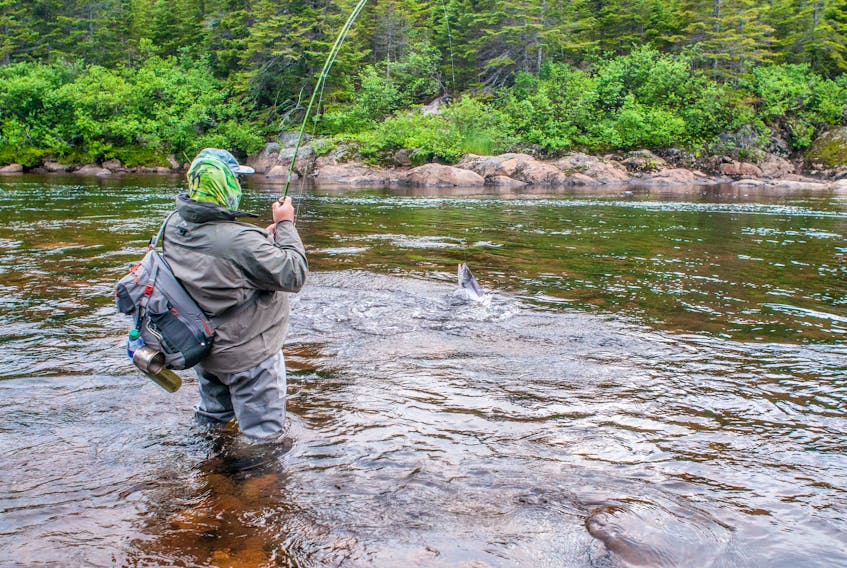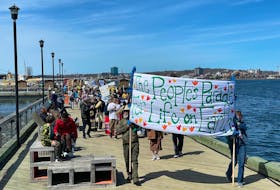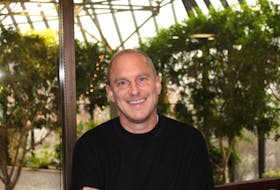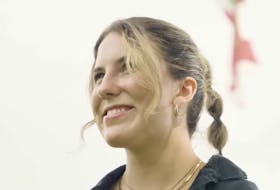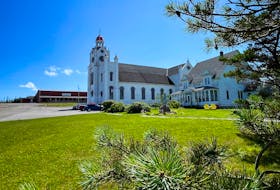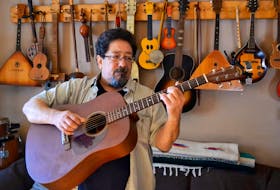I’m sure these sort of open ocean salmon farming cages are in the causal mix somewhere, no matter what the industry proclaims.
It’s past the midpoint of March and it’s kind of looking like winter is losing its icy grip. After we pass a short crazy episode the long-term modeling looks lovely.
As I write this on Thursday, the forecast for tonight and tomorrow, Friday, looks like a unique and wild scenario.
Well, I suppose nothing is really strange or unique here on the Avalon Peninsula. The only thing consistent in our weather is inconsistency. Oh well, but even by our standards this is really something, if it plays out as being predicted right now. When you read my column we will know for sure.
By some accounts, because there are varying opinions amongst the pros on this one, it will began to rain just after midnight and the temperature will shoot up to nearly double digits with strong southerly winds.
Towards daylight the rain is supposed to really pile on with possible totals of over 50-mm in localized areas. There’s a significant snowpack down so there could very well be flooding in areas that are susceptible. Then later on Friday the wind will swing around the compass ending up out of the northwest, along with expected freezing temperatures. They say we could get 20-cm of snow to finish off the disturbance.

Now that is one hell of a weather rollercoaster. We will see what happens.
Chaos is everywhere. That’s why it’s so difficult to predict the weather, especially in coastal regions like Newfoundland and Labrador. On Oct, 29, 1987, Viking Books published a science book by James Gleick. It was titled “Making a New Science – Chaos.” It won prizes in the day, and was shortlisted for big ones like the Pulitzer.
More importantly, it changed my life, or at least the way I think about nature, which is the same thing I suppose. Really, I used to believe in non-complicated cause and effect, a simple world, where one thing leads directly to another.
That’s pretty much what I learned in school. I am so glad I picked up that book in the late '80s and read it cover to cover and then again.
It caught my eye because I loved Maxwell Smart … you know what I mean.
Anyway, what is this chaos stuff, and why am I talking about it in my outdoors water and woods column?
Because nature does not dance the tune of simple predictable relationships, not on this planet. You can’t predict the bloody weather around here anymore than a couple of days out, and that’s with satellites, super computers, and Doppler radars out to the ying-yang.
Have you heard of the butterfly effect? It’s all in the chaos book but in a nutshell, complex systems like weather are so susceptible to initial conditions that a teeny weeny change can have huge end effects. So it goes, a butterfly could flap its wings on the Equator and we’d have rain instead of snow on the Avalon. It happens. Read the book if this fascinates you.
Nature and all its critters are part of an enormously complex ecosystem. That includes our woodland caribou that are in decline and we don’t know why. Partridge have all but disappeared off the Avalon. Salmon have been in trouble since the early '90s and have not rebounded despite a closure of commercial fishing and severe limits on angling.
But every day I hear people proclaiming the one true cause of whatever dilemma in nature they proclaim the inside knowledge on. Read the book.
It is never that simple. Rarely is there one cause and one effect. There are always far too many variables, many of which we can’t quantify or understand, and maybe some that we don’t even know to exist. We need to take a step back here and think outside our own biases and agendas.

The hot topic now is the south coast population of Atlantic salmon. This includes rivers extending from the southeast tip of the Avalon Peninsula, Cape Race, and westward along the south coast to Cape Ray. That’s a vast coastline and includes the severely depleted Conne River near major aquaculture operations.
There’s no space here to go into all the details but it’s possible that DFO will have this salmon stock listed under SARA, the Species at Risk Act. This would mean that absolutely no fishing would be allowed. Lots of folks would not be happy.
There had better be an upside to this, but there are doubts.
There is no question, there are rivers in this region that should not be fished, but others might be in fine shape, or at least on a par with the rest of salmon rivers in the world, because numbers are down everywhere to a roughly common degree.
Whether SARA happens or not remains to be seen but many conservation groups feel a SARA listing for this huge geographical area will do more harm than good. Aquaculture would likely be exempted but hook and release fishing banned. That’s odd.
Maybe we could do river-by-river management? Or at least smaller zones, wouldn’t that make sense?
Back to chaos and, like I said, there has been a lot of chatter lately on salmon and specifically those southerly salmon.
The aquaculture community’s position seems to be that all else is to blame but open pen salmon farming.
Really they have nothing to support that position. There is much that disputes it.
Others blame it all on the seals, calling them rats of the ocean.
Also ridiculous, because seals are part of nature also — but no doubt, there are too many seals out there.
There are the chosen few who proclaim hook-and-release angling the ultimate evil. I’m not going there right now, totally sick of the infighting.
Others say the caplin are gone and the salmon and cod are starving. Global warming is the villain, a familiar culprit, and likely in the complex mix to a large degree. The French are still commercial harvesting.
Bottom line, there is a lot going on here and the modelling equations are surely mind boggling. There could even be factors we are not aware of. We need some serious scientific effort here. We need to pull together and not fight about who or what is to blame.
We just don’t know exactly what’s going on.
There is no simple answer, no one cause. We need to understand the chaos, and that is not easy.
But there are tons of seals out there and I love seal meat. I’m doing my personal use humane seal harvesting course online and going seal hunting this spring. This could be simple for a change.
Paul shoots seal in Conception Bay on a calm sunny May morning. There will be flipper and pastry for supper with potatoes, carrots and parsnips.
Also I’m thinking of setting up an amateur weather station.
Can anybody help me with that?
Paul Smith, a native of Spaniard’s Bay, fishes and wanders the outdoors at every opportunity.

